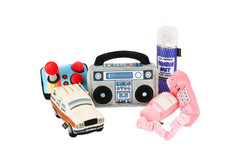Many people love caring for dogs in their homes as they're generally friendly and fun companions. However, it's also possible for sweet and playful dogs to display harmful or destructive behavior for various reasons. For instance, some may bark or howl too much to get attention, while others may resort to chewing and biting to relieve boredom or stress. It's also possible for dogs with health conditions to abruptly change behavior, requiring medical attention and specialized dog training to modify.
If you want to know more about dogs' most common behavior issues and practical solutions, continue reading this article.
Aggression
Dogs can display hostility when they're scared or anxious. Some of the most common ways dogs show aggression are:
- Growling
- Baring teeth
- Stiff posture
- Ears moving towards the back of the head
- Snarling
When a dog displays aggressive behavior, it may be difficult for owners and house occupants to interact or come in contact with them because of the danger it entails. In this case, you'll need to hire professional dog training services to help your dog learn how to interact in a friendly and non-threatening manner in various situations.
Apart from training, you'll also need to take safety precautions when caring for your dog. For instance, you may need a muzzle to take the dog for a walk to prevent untoward incidents. Also, it's best to house the dog in a location away from children and people they're unfamiliar with to keep everyone safe and comfortable.
Biting
It's common for dogs to resort to biting when feeling unsafe, threatened, or anxious. However, this harmful behavior may affect your dog's interaction with people and other animals. To help your dog learn healthier ways to cope with triggering feelings, you can encourage it to socialize with various people and animals so it knows how to relax around others. Also, you'll need to pay close attention when your dog displays signs of distress, such as barking, snarling, or rejecting contact with others.
If this happens, you can help your dog feel more comfortable and safer by taking it outdoors or moving it to a location where it can relax. It’ll also be wise to put a muzzle on your dog in busy areas or if you have to spend time around children to avoid potential hazards. Finally, you can consult with your vet or a dog trainer to explore treatment or training options that can help modify the dog's behavior.
Chewing
Puppies and adult dogs find joy and calm in chewing toys and other objects. However, it can create significant damage if your dog isn't trained to refrain from chewing furniture and other household items. Moreover, chewing on non-food items can pose choking and health hazards for the dog. To help your furry pal break its chewing habit, you'll need to give your dog chew toys as an alternative. You can also reward it for good behavior if it stops chewing your valuables in exchange for chewing toys.
Food Guarding
Food guarding refers to aggressive behavior to protect or defend food, toys, and other possessions. With this behavior, the dog may choose to attack or be aggressive towards people and other animals in the household. It can also try to hide food and treats in different places or defend its territory by barking or biting.
If your dog shows mild symptoms of aggressive food guarding, you can consider giving it food, treats, or toys in a separate area away from other people and pets at home. This way, your dog will get used to having no competition around resources and may gradually relax over time. However, dogs with severe anxiety may require medication to help curb aggressive behavior.
Whining
Dogs usually whine as a form of vocal communication to express emotions such as excitement, anxiety, needing attention, or if they're trying to appease their owners. Meanwhile, some dogs whine as a way to greet other dogs or people or when they're under stress.
The effective way to manage your dog's whining behavior depends on the reason. For instance, whining as a form of greeting can be modified by diverting your dog's attention to other things or downplaying your excitement when you meet. On the other hand, anxiety or stress-induced whining can be remediated by a combination of medications and behavior-modification training.
Conclusion
Persistent dog behavior issues usually require a veterinarian or dog behavior specialist consultation. It's best to consult with professionals to ensure that your dog has no underlying medical conditions that trigger harmful behavior. Also, dog trainers can offer tips on how to correct your dog's behavior safely, effectively, and lovingly. Regardless of the severity of your dog's behavior, it's essential to use gentle, humane ways to modify any behavior issues.
About the Author
Lowell Akron runs a shelter for dogs and cats rescued from troubled situations. He also aims to spread awareness and guide responsible pet owners everywhere through his articles and posts. At home, he cares for four of his own rescues.





